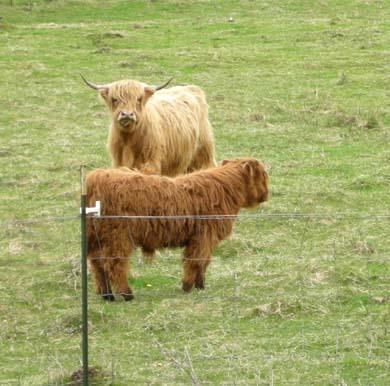 |
In the course of my doctoral dissertation research, on the pre homosapien evolution of Whidbey Island, I came across archive material which I feel will in due time lead to a Pulitzer Prize, or a Nobel Peace Prize, if not a Stanwood Community Fair ribbon.
Because I hold you in the very utmost pinnacle of esteem, I shall share with you details of my findings, that up until now, have never been released.
Long before the first native American came to the region, cows populated the latitude and longitude of the Pacific North West that has come to be known as Whidbey Island.
Careful translation of inscriptions discovered on cuneiform tablets, written by ancient native Americans, found in a field on Whidbey Island, holds that the cows came to Whidbey Island carried by the wings of gods. However, I have, at last, formulated and documented rock forms on the narrow passage between Fidalgo Island and Whidbey Island that reveal hoof marks where the cows jumped from one island to the other. This is the area of 48° 24' 04.54" N, 122° 37' 28.96" W, per NOAA Chart 18427. This spot in recent history has been named Deception Pass. In this very location, the Corps of Engineers built the impressive Deception Pass bridge.
Imagine my feelings of elation as I carefully excavated the exit and entrance points where the bovine creatures jumped across the swiftly moving treacherous passage. As weeks passed into months, fortified only by prodigious amounts of brandy, the words of the ancient cuneiform translated into the English, “hey diddle diddle” lead to further startling revelations. Please read the next sentence at least twice to allow the impact of the words to adequately permeate into your conscientious... the cow that jumped over the moon actually left the earth AND returned to the earth on Whidbey Island.
Further research and calculations led to the realization that these ancient bovine creatures practised “touch and goes” on a level area to the south of present day Coupeville on Whidbey Island. I can almost hear you say... ahhh haaa!, and, you betcha! Yes, this is true... this is where today one finds the U.S. Navy has a training runway used by pilots to practice their skills of landing and taking off.
While it is commonly acknowledged that pigs have the ability to fly, if they so choose, other animal levitation has rarely been documented. Based upon the research of fellow scientist, Dr. J.G., sheep have extra ordinary jumping abilities, however, are unable to overcome the forces of air turbulence. Dr. G. spent countless hours of research, kept alive only by a liquid diet, has received world wide aclaim for his research on the flight of pigs.
As a side note, in one of my recent paintings I have documented the origins of the marks on the moon that have mistakenly been called craters. They are marks from the landing of jumping white elephants. However, that is work for yet a future treatise.
Studying the ancient round platters found in the fields have revealed historical reports of bovine space travel written in cowese. I have been able to translate from the cowish to our present day English language.
If a cow was studying to jump into space, she was called a Space Cowdet. Once she had achieved the goal of jumping over the moon, she was awarded the title of Cowsmonaut.
Please refer to my paintings of Space Cowdet Lisa, and Space Cowdet Emma, along with Cowsmonaut Wendy and Cowsmonaut Zenia.
While Cowsmonaut Wendy was painted when in her prime, during her historic jump, Cowsmonaut Zenia was painted at a later stage of her life after she had returned to earth and like an older football player, has managed put on a few extra pounds.
In the future I plan to document on canvas the tragic re-entry of Brown Cow when she miscalculated her landing and ended up caught in a Madrone tree. Poor creature, all the other cows who saw her there could only look up and say: “How now Brown Cow?”
Please be certain to send you generous donation for the funding of this research. |